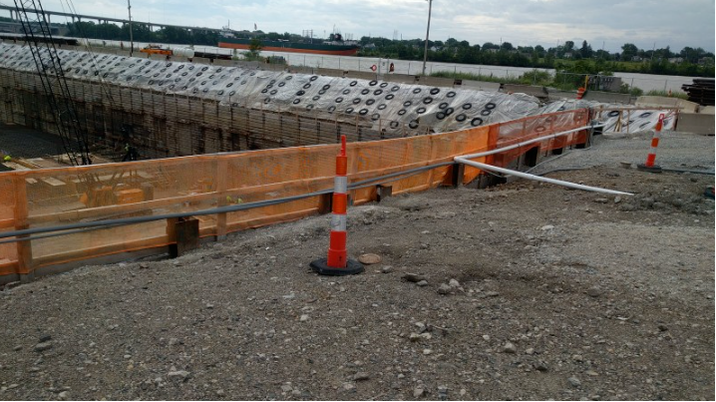How Consulting Engineers Enhance Geotechnical Engineering Projects: Insights Into Their Competence, Approaches, and Collaborative Approaches
Consulting designers are essential in enhancing geotechnical design jobs, applying their specialized knowledge to navigate the complexities of subsurface conditions. Their methodologies incorporate a series of site investigation techniques, consisting of Requirement Infiltration Examinations (SPT) and Cone Penetration Tests (CPT), which notify critical choices throughout the style and construction stages. Their collaborative approaches foster interaction among varied task stakeholders, inevitably forming the project's trajectory. As we take a look at the multifaceted duties these professionals play, it comes to be clear that their contributions prolong past technical knowledge, triggering a more detailed look at the implications for job success.
Function of Consulting Engineers
The expertise of consulting engineers in geotechnical engineering is basic to the successful execution of building jobs. These experts play a critical duty in analyzing soil and rock properties, which are essential factors affecting layout and building and construction decisions. By performing comprehensive site investigations, seeking advice from engineers accumulate important data that educates the layout procedure, making sure jobs are constructed on stable and suitable ground.
Consulting engineers also give vital understandings right into threat monitoring (geotechnical geologist). They determine prospective geotechnical hazards, such as landslides, dirt liquefaction, and settlement concerns, making it possible for stakeholders to carry out reliable mitigation techniques. Their knowledge aids in maximizing foundation designs, which can lead to substantial cost financial savings and boosted safety and security
In addition, speaking with engineers work as an important web link in between project proprietors, engineers, and specialists. Their ability to translate intricate geotechnical data right into actionable suggestions fosters cooperation and assists in informed decision-making throughout the project lifecycle. This multidisciplinary approach not only enhances job performance yet likewise guarantees conformity with regulatory requirements and ideal practices.
Trick Approaches in Geotechnical Design

One main technique is website investigation, which entails conducting area examinations and lab evaluations to gather data on subsurface conditions. Strategies such as Standard Penetration Testing (SPT) and Cone Infiltration Screening (CPT) are widely utilized to evaluate dirt stratigraphy and toughness. In addition, geophysical techniques, consisting of seismic and electric resistivity studies, give non-invasive methods to examine subsurface features.
An additional vital method is numerical modeling, which enables engineers to simulate various scenarios and predict how soil-structure communications will behave under different loading conditions. Finite Component Evaluation (FEA) is a common method employed in this context.
Moreover, the design of structures, preserving frameworks, and earthworks depends heavily on these approaches - geotechnical geologist. By integrating advanced logical devices with field information, consulting designers can create tailored solutions that address details job challenges, ultimately adding to the Recommended Reading security and safety of construction tasks
Value of Soil Evaluation
Soil evaluation acts as a fundamental element in geotechnical engineering, providing essential understandings right into the physical and chemical properties of soil necessary for efficient building and construction preparation. Understanding soil features is critical for establishing its load-bearing capability, water drainage habits, and possibility for settlement or instability. In-depth soil investigations, consisting of tasting and lab screening, help determine criteria such as soil type, wetness web content, density, and shear strength.
These evaluations inform the choice of proper construction methods and products, inevitably affecting project security and long life. For instance, cohesive soils may need various foundation layouts compared to granular dirts, demanding customized design solutions. Furthermore, soil evaluation aids in identifying contaminants that could position dangers to human health and wellness or the atmosphere, enabling the development of reduction approaches.
Incorporating dirt evaluation right into the beginning of project development aids to minimize unforeseen challenges, ensuring that designers can expect and deal about his with potential issues before they rise. By developing a thorough understanding of the website conditions, speaking with engineers can optimize style performance and reduce costs, thereby boosting the general success of geotechnical engineering jobs.
Collective Strategies in Tasks
Successful geotechnical tasks often pivot on collaborative techniques that combine varied experience from numerous self-controls. Efficient collaboration amongst speaking with designers, rock hounds, ecological scientists, and construction specialists is important for dealing with intricate difficulties and maximizing job end results. By leveraging the distinct abilities and knowledge of each group member, jobs can take advantage of a holistic understanding of the website conditions, governing needs, and design constraints.
Normal communication and interdisciplinary conferences help with the sharing of understandings and cultivate a culture of team effort. These collaborative initiatives enable the recognition of possible risks early in the job lifecycle, permitting for timely mitigation approaches. Additionally, including feedback from stakeholders, including regional read what he said communities and regulative firms, makes certain that all perspectives are thought about, boosting project acceptance and compliance.
Additionally, the combination of sophisticated innovations, such as Geographic Info Equipment (GIS) and Structure Details Modeling (BIM), more boosts collaboration. These tools permit the real-time sharing of data and visualization of geotechnical problems, advertising informed decision-making. Ultimately, a collective technique not only enhances job execution yet additionally lays the structure for ingenious options to complicated geotechnical engineering challenges.
Impact on Task Outcomes

Consulting engineers utilize sophisticated methodologies such as danger assessment and anticipating modeling, which improve the precision of job forecasts. Their ability to integrate cutting-edge modern technologies, like geotechnical instrumentation and data analytics, even more improves the layout and building processes. As a result, projects experience boosted effectiveness, minimized expenses, and lessened hold-ups.
In addition, promoting efficient interaction and partnership amongst staff member boosts analytic capacities. When difficulties arise, a united front permits speedy recognition of solutions, preventing potential problems. Ultimately, the collective efforts of speaking with designers add to higher top quality results, making sure that jobs meet both governing requirements and client expectations.
Final Thought
